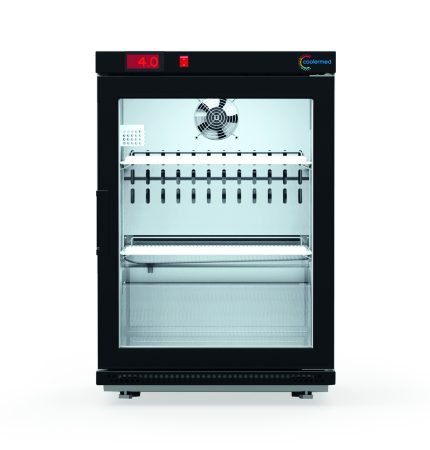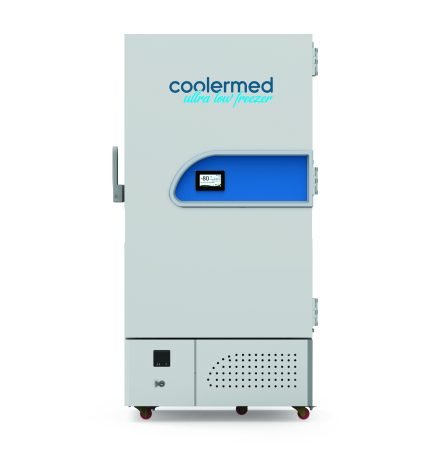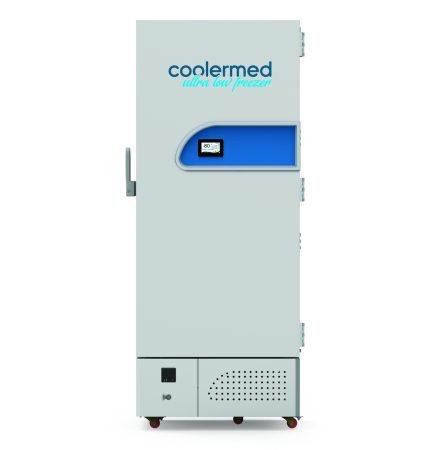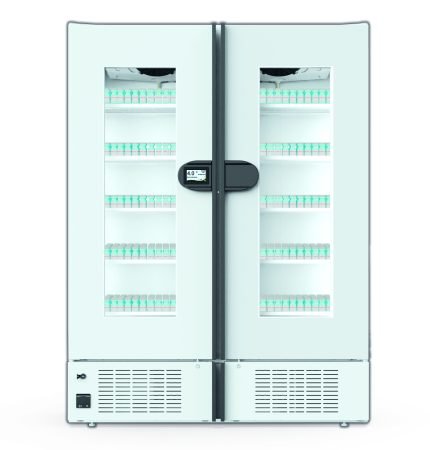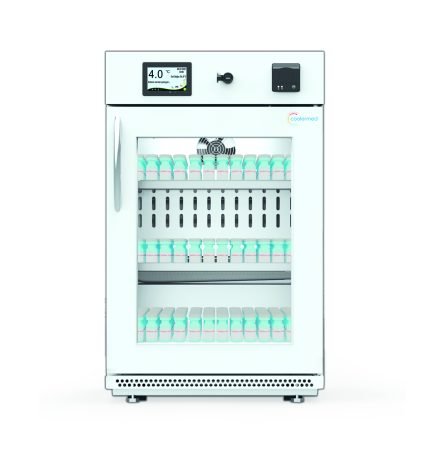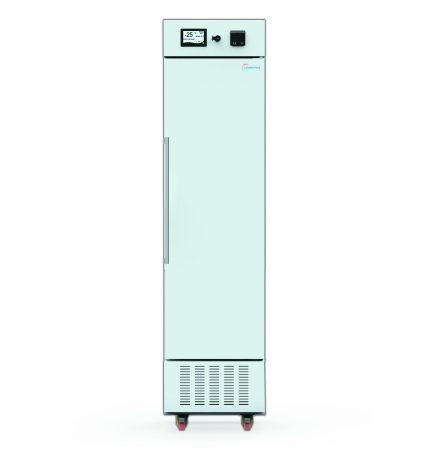Showing 1–12 of 26 results
A medical freezer is a specialized refrigeration device pivotal in healthcare settings. Its primary purpose is to store temperature-sensitive medical supplies, biological samples, and other vital materials that demand consistent and precise temperature control. Unlike household or commercial freezers, medical freezers are engineered to operate within stringent temperature ranges, ensuring that every item inside remains uncompromised.
The evolution of freezers traces back to the growing need to preserve and maintain the integrity of biological materials. As the medical field has advanced, the importance of precise temperature control has become evident, especially with the development of delicate medications, sensitive tissue samples, and breakthrough vaccines. These advances have necessitated the creation of freezers capable of offering more consistent temperatures and advanced monitoring features. At Coolermed, our commitment transcends mere storage. We pride ourselves on delivering medical and outdoor coolers that meet and exceed industry standards, ensuring our clients have the most reliable and efficient equipment. As the field of medicine continues to evolve, so does our determination to offer products that align with the highest benchmarks of quality and innovation.
What is a Medical Freezer?
A medical freezer, also known as a pharmaceutical freezer, is a specialized appliance designed to store medical and pharmaceutical products at precise, controlled temperatures. These freezers are essential for maintaining the integrity and efficacy of sensitive items such as vaccines, medications, blood samples, and other biological materials. Unlike regular freezers, medical ones adhere to strict guidelines and standards to ensure that their contents are stored under optimal conditions. Common types include pharmacy refrigerators, vaccine freezers, and laboratory freezers.
What is the Working Principle of a Medical Refrigerator?
The working principle of a medical freezer involves maintaining a stable and uniform temperature to preserve the stored medical products. Here’s how it works:
- Refrigeration Cycle: Medical refrigerators, such as blood bank refrigerators, use a refrigeration cycle involving a refrigerant that absorbs and expels heat to keep the internal temperature low. This cycle consists of compression, condensation, expansion, and evaporation stages.
- Temperature Control: Advanced thermostats and temperature control systems ensure that the interior temperature remains within a specified range, usually between 2°C and 8°C for vaccine storage.
- Insulation: High-quality insulation materials are used to prevent external temperature fluctuations from affecting the internal environment.
- Cooling System: The cooling system includes fans that circulate cold air evenly throughout the refrigerator, ensuring uniform temperature distribution.
What Temperature Should a Medical Fridge Be?
The temperature of a medical refrigerator should typically be maintained between 2°C and 8°C (36°F to 46°F). This range is ideal for preserving the efficacy of vaccines and other temperature-sensitive medical products. However, specific requirements can vary depending on the type of medical product being stored. For instance, certain pharmaceutical freezers might need to maintain temperatures as low as -80°C for ultra-cold storage of specific vaccines and biological samples.
Types of Medical Freezers
There are several types of medical freezers, each designed for specific applications and storage needs:
- Pharmacy Refrigerators: These are used to store medications, vaccines, and other pharmaceutical products at controlled temperatures. They are often found in pharmacies and healthcare facilities.
- Vaccine Freezers: Designed specifically for storing vaccines, these freezers maintain precise temperature ranges and often come with monitoring and alarm systems to prevent temperature excursions.
- Laboratory Freezers: Used in research and clinical laboratories, these freezers store biological samples, reagents, and other research materials at varying temperature ranges depending on the requirements.
- Portable Vaccine Freezers: These are small, compact and portable units designed for transporting vaccines and other temperature-sensitive medical products. They are often used in field settings and for vaccine distribution.
- Medical Refrigerators for Home Use: Some medical fridges are designed for home use, ideal for patients who need to store medications that require refrigeration.
- Medical Cold Storage: These large-scale units are used in hospitals and research facilities for storing a significant volume of medical products. They provide high capacity and advanced temperature control features.
Key Features to Consider When Buying a Medical Freezer
When in the market for a medical freezer, certain fundamental features stand out as essential for maintaining the quality and safety of your medical items. Here’s a concise guide to what you should prioritize:
- Consistent Temperature Range and Stability: A top-grade medical deep freezer provides a stable temperature, protecting delicate medical supplies and specimens.
- Adequate Storage Capacity and Adjustable Shelving: Depending on your storage needs, select a freezer offering ample space. Adjustable shelves in medical-grade freezers offer versatility for varying storage requirements.
- Energy Efficiency: Since freezers run non-stop, opting for energy-efficient models reduces electricity costs and reduces carbon footprint.
- Safety and Alarm Systems: Immediate alerts for temperature fluctuations or power interruptions are crucial. This feature ensures the stored items remain in optimal condition.
- Trustworthy Brands: When looking for a freezer for sale, it’s essential to consider brand reputation. We at Coolermed prioritize offering quality and performance, ensuring our customers make informed decisions with confidence.
Choosing the right freezer can significantly influence the safety and longevity of stored medical materials. Ensure you select wisely.
The Role of Medical Freezers in Vaccine Storage
Vaccines and blood, being sensitive biological substances, require optimal storage conditions to maintain their potency and efficacy. Medical freezers, particularly pharmaceutical and lab freezers, are pivotal in consistently meeting these conditions. For many vaccines, exposure to temperatures outside their recommended range can lead to a loss of potency, rendering them ineffective. It can also lead to financial losses due to wasted vaccine batches. This is where the importance of a reliable pharmaceutical freezer becomes evident. Such a freezer offers precise temperature controls, ensuring that vaccines are stored at their required temperatures, typically between -50°C and -15°C for most vaccines. In labs and research institutions, a lab freezer’s role is crucial. These freezers store vaccines and other biological samples that might be used in vaccine development or blood testing. Their design ensures uniform cooling, preventing any ‘hot’ or ‘cold’ spots that might compromise the integrity of stored items. At Coolermed, we understand the immense responsibility that comes with vaccine storage. Our range of freezers is designed precisely, ensuring that pharmaceutical and lab requirements are consistently met. Trusting in our technology means ensuring the safety and effectiveness of vaccines and blood bank storage for everyone.
Medical Freezer Prices
The prices of medical freezers can vary significantly depending on their size, features, and specific requirements. Factors such as advanced temperature controls, monitoring systems, and build quality can influence the cost. For the best medical freezer solutions that ensure the highest standards of medical refrigeration, visit Coolermed. At Coolermed, we offer a wide range of medical refrigerators and freezers, all designed to meet the stringent demands of the healthcare industry while providing excellent value for money.

